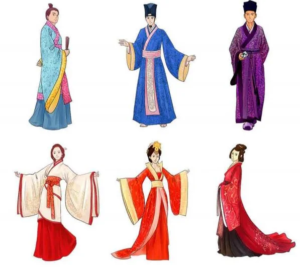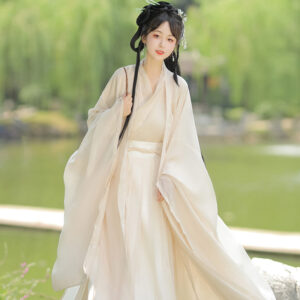

Qing Dynasty Hanfu incorporated various Western influences, evident in textiles, designs, and formal attire.The Qing Dynasty (1644–1912) marked a significant period of cultural exchange between China and the West, particularly reflected in clothing styles. The infusion of Western elements into Hanfu during this era illustrates a fascinating blend of traditional Chinese aesthetics with foreign influences. This transformation was not merely superficial; it represented deeper socio-political and economic interactions that shaped the fashion landscape of the time.
Overview of Western Influence on Qing Dynasty Clothing
The integration of Western influences into Qing Dynasty apparel is notable across several dimensions:
- Textiles and Fabrics: The introduction of Western materials like wool and velvet revolutionized traditional garment production. These fabrics provided new textures and functionalities, allowing for more diverse clothing options.
- Design and Patterns: Western motifs began to appear in Chinese clothing, especially floral designs that were previously unseen in traditional Hanfu. This shift was facilitated by increased trade and cultural exchange, leading to a fusion of Eastern and Western artistic sensibilities.
- Formal Attire Modifications: The adoption of Western military uniforms by Qing officials exemplifies how traditional court dress evolved. Structured designs with features such as medals and epaulettes reflected a departure from conventional Chinese formal wear while still honoring traditional symbols.
Table: Key Aspects of Western Influence on Qing Dynasty Hanfu
| Aspect | Description |
|---|---|
| Textiles | Introduction of wool and velvet, enhancing garment texture and functionality |
| Design Patterns | Incorporation of European floral motifs into robes and gowns |
| Formal Attire | Adoption of structured military uniforms featuring Western elements like medals and epaulettes |
| Cultural Exchange | Increased interaction with Western cultures through trade, diplomacy, and military modernization |
Detailed Examination of Influences
Textiles and Fabrics
The Qing Dynasty saw the introduction of various Western textiles that significantly altered traditional clothing practices. Wool became popular for its warmth and durability, while velvet added a luxurious texture to garments. This shift allowed for more practical attire suited to changing climates and social needs.
Design Innovations
The influence of Western aesthetics is perhaps most visible in the realm of design. The introduction of floral patterns from Europe created a new visual language in Chinese fashion. These motifs were often combined with traditional elements, resulting in unique hybrid designs that appealed to both traditionalists and those seeking modernity.
Formal Attire Transformations
Formal attire underwent significant changes during the Qing Dynasty due to Western influence. The dragon robe (longpao), a symbol of imperial authority, began to incorporate Western-style buttons and collars while maintaining its traditional silhouette. This blending signified a willingness to adapt while preserving cultural identity.
Conclusion on Cultural Exchange
The evolution of Qing Dynasty Hanfu reflects a complex interplay between tradition and modernity. The incorporation of Western influences not only diversified Chinese apparel but also symbolized broader cultural exchanges that shaped the socio-political landscape of the time. This period marked a significant chapter in the history of Chinese fashion, illustrating how cross-cultural interactions can enrich and transform traditional practices.
Share this post
Recent Posts


What were the key features of Hanfu during the Tang Dynasty?

How did Hanfu styles vary during different Chinese dynasties?

What accessories are typically worn with Hanfu?

How do you choose the right Hanfu for different seasons?

Newsletter
Popular Categories
Related Post
Sed aliquam, tortor et sodales malesuada, lorem leo luctus tellus, quis interdum eros nibh in nunc. Cras dignissim malesuada, lorem leo luctus

What are the winter hanfu called?

What were the key features of Hanfu during the Tang Dynasty?

How did Hanfu styles vary during different Chinese dynasties?


